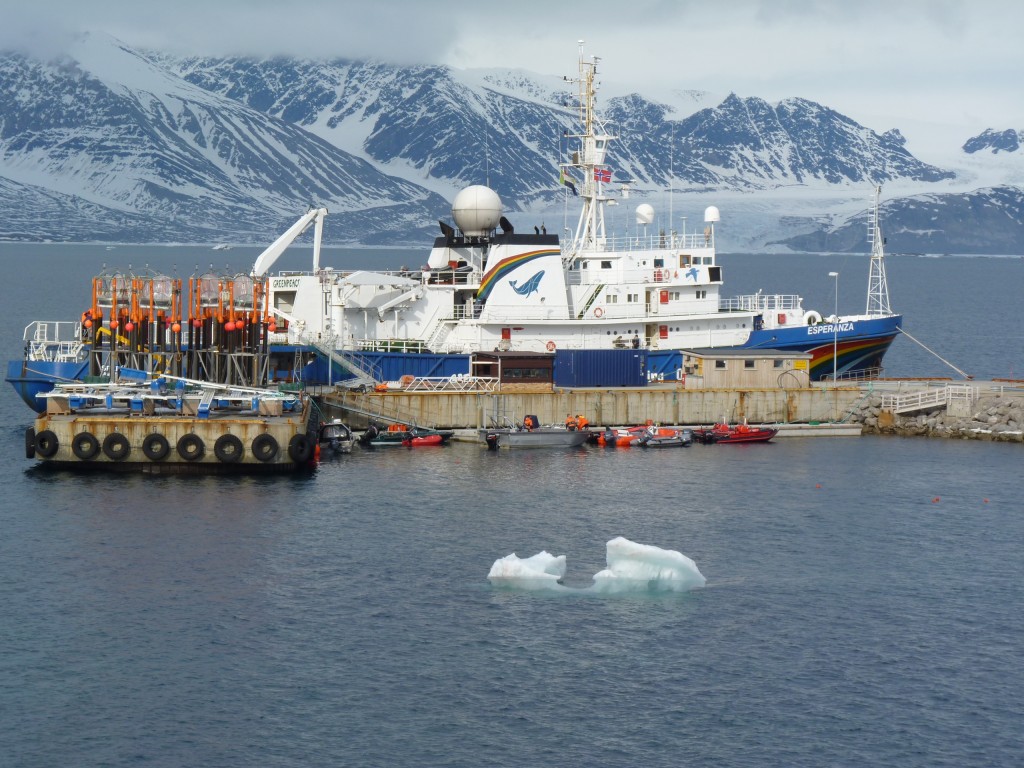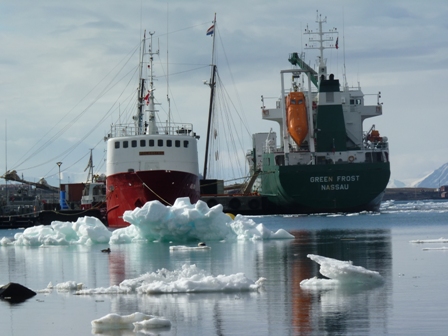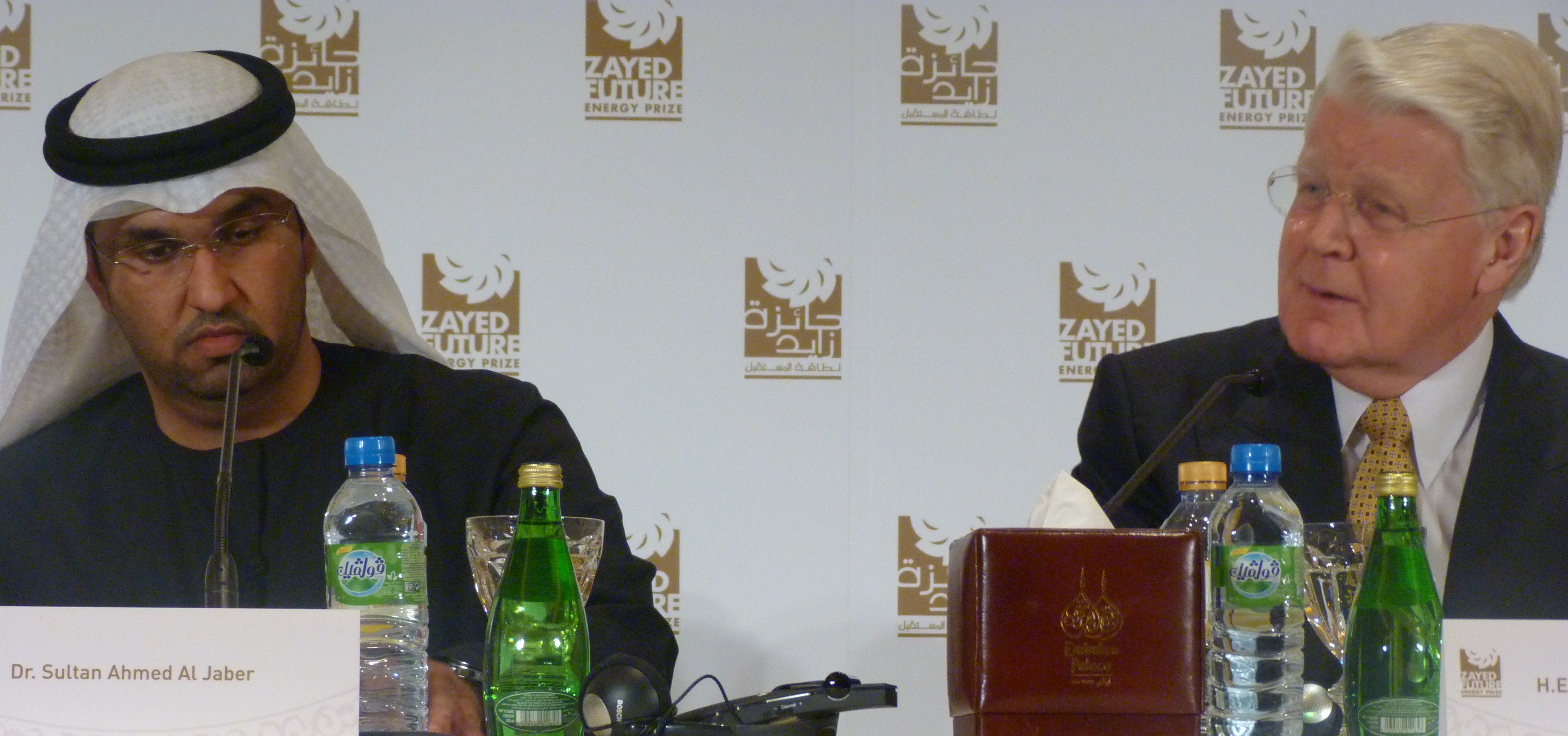10 years French-German Arctic Station
Congratulations to the team of the joint French-German Arctic research station in Ny Alesund, Svalbard. It is ten years since the German polar authority AWI (Alfred-Wegener Institute for Polar and Marine Research) and its French counterpart IPEV (Institut Polaire Paul Emile Victor) joined forces at the world’s northernmost research base.
The station was my first Arctic destination in 2007, so it has a special significance for me. During the IPY, I was involved in an international radio cooperation to report on polar science, which was how the Ice Blog was born.
Photo gallery from Ny Alesund, “From Pole to Pole”.
AWIPEV is the biggest of the research stations in Ny Alesund, and takes up to 150 scientists from France and Germany in the course of a year.
I visited again in 2010 with a team looking at ocean acidification. Their equipment was transported up by the Greenpeace ship Esperanza, a “first” in terms of cooperation between scientists funded by the EU’s EPOCA programme and the environment group. Greenpeace offered the ship to help out when none of the scientific research vessels was available for the project.
The station has also just been the first to be officially approved by the climate data network GRUAN. Not a terribly attractive acronym, but definitely easier to say/write than the whole title: Global Climate Observing System Reference Upper Air Network. Basically, the idea is to standardize and the measurement of climate parameters around the world so that the figures are really comparable. It was initiated by the World Meteorological Organization, the Intergovernmental Oceanographic Commission, UNESCO, UNEP and the International Council for Science.
Keep up the good work everyone up there at AWIPEV.
“Penguins” ask Berlin to save Antarctic
Today, it seems, is World Penguin Day. If you happened to be in the German capital, Berlin, this would have been drawn to your attention by largish “penguins” visiting the embassies of Russia, China and Norway, as well as the German Agriculture Ministry, which, it may surprise you to know, is responsible for the protection of the Antarctic on behalf of the German government
Activists from “The Antarctic Ocean Alliance“, (AOA) made use of the occasion to draw attention to the need to protect the pristine ice region at the south of the world. The background is that Germany will be host to a meeting of the Commission for the Conservation of Antarctic Marine Living Resources (CCALMR) in July this year. The meeting, in Bremerhaven, home of Germany’s Alfred Wegener Institute for polar and marine research, will be discussing the possible creation of two Marine Protected areas (MPAs) in the Antarctic. The alliance, made up of WWF, Greenpeace, Deepwave, Whale and Dolphin Conservation (WDC) and others, is calling on Germany to play a leading role and on other key countries to support a decision in favour of the protected areas.
Steve Campbell, Campaign Director of the AOA, stressed Germany’s long tradition of scientific polar research and the key role the country could play in Antarctic protection. The alliance stresses that the Southern ocean is under increasing pressure from climate change and resource depletion. The areas the AOA want protected now are described by the campaigners as one of the world’s last wildernesses and an essential “living laboratory” for the planet.
Why a new “Arctic Circle” Forum?
While working on a story about the Arctic Council in the run-up to its next meeting in May, I was greatly interested by the announcement that there is to be a new global forum called the Arctic Circle. Iceland’s President Ólafur Ragnar Grímsson, made the announcement this week at an event held by the National Press Club in Washington. On the Arctic Circle website, the new organization is described as “nonprofit and nonpartisan”. The mission is “to facilitate dialogue and build relationships to confront the Arctic’s greatest challenges. We aim to strengthen the decision-making process by bringing together as many Arctic and international partners as possible under one large ‘open tent’. By facilitating circumpolar meetings of leaders across disciplines, we will identify truly sustainable development practices for the Arctic, the world’s last pristine environment”.
The background, of course, is the opening of the Arctic to shipping and commercial exploitation because of climate change. The organisers say the new open forum will help raise the profile of Arctic issues worldwide and discuss solutions “in a frank and collaborative manner”.
I met President Grimsson in January in what at first sight might appear an unusual location – the Gulf emirate of Abu Dhabi.
We live in an ice-dependent world, says Iceland’s President
He actually has close ties to the emirate, and was there for “sustainability week” and the World Future Energies Forum. He explained to me then his interest in making it clear that the Arctic is not just of significance to the High North region and the countries around it, but the planet as a whole. So I am not surprised that he is spearheading an attempt to open the region to the influence of other countries. Iceland has also been conducting a lot of negotiations with China, including a new free trade agreement announced by the President this week. As reported on the Ice Blog and DW before, China is increasingly interested in getting a foothold in the Arctic.
See China’s Arctic ambitions spark concern
Grimsson told Thomson Reuters the new forum was needed because “while most countries have a stake in the melting of Arctic ice, only eight – Canada, Denmark, Finland, Iceland, Norway, Russia, Sweden and the United States – are members of the Arctic Council”. The intergovernmental group was established in 1996.
China, India and Singapore are amongst the non-Arctic states seeking observer status on the Arctic Council at a meeting to be held in Sweden next month. The new “Arctic Circle”, on the other hand, would be open to anybody: “concerned citizens, representatives of ngos, scientists, researchers alongside governments and corporations.”
The first meeting of the new forum will be held in Iceland in October. It remains to be seen who will sign up and how influential it will turn out to be. The formation of the group shows the Arctic’s rising significance on the international agenda. The question is which forum will turn out be the best placed to effectively protect the sensitive ecosystems and traditional lifestyles of indigenous groups in the Arctic at the time when international commercial interest is growing steadily. And with the burning of fossil fuels continuing to exacerbate climate change and no progress being made towards reducing emissions – who is to mediate in the conflict between those who want to profit from exploiting oil and gas resources in The Arctic and those who want to stop using it and shift to climate-friendly renewables? There are those who would like to do both. But as the saying goes, “you can’t have your cake and eat it” – or maybe you can’t have your ice and melt it?
Antarctic Peninsula is thawing faster
Ice in parts of the Antarctic Peninsula is now melting during the summer faster than at any time during the last thousand years, according to new research results. The scientists have reconstructed changes in the intensity of ice-melt, and the mean temperature on the northern Antarctic Peninsula since AD 1000, based on the analysis of ice cores.
According to the study, published in the journal Nature Geoscience, the coolest conditions and lowest melt occurred from about AD 1410 to 1460, when mean temperature was 1.6 °C lower than that of 1981–2000. Since the late 1400s, there has been a nearly tenfold increase in melt intensity from 0.5 to 4.9%. The warming has occurred in progressive phases since about AD 1460, but the melting has intensified, and has largely occurred since the mid-twentieth century. The study concludes that “ice on the Antarctic Peninsula is now particularly susceptible to rapid increases in melting and loss in response to relatively small increases in mean temperature”.
Paul Brown of Climate News Network says the findings explain a series of sudden collapses of ice shelves in the last 20 years, which scientists studying them had not expected. He also quotes the researchers as saying the current melting could lead to “further dramatic events, making the loss of large quantities of ice on the Peninsula more likely, and adding to sea level rise”.
The study is also of interest against the background of the debate going on over the last 20 years on whether the Antarctic would gain mass through extra snow falling and so REDUCE sea level rise, or would lose ice because of higher sea and air temperature and so exacerbate the effect.
The scientists use a 364-metre ice core from James Ross Island to get in insight into both past temperatures and ice melt. Layers in the core show periods when summer snow on the ice cap thawed and then refroze. By measuring the thickness of the layers, they could tell how the history of the melting related to changes in temperature at the site over the last thousand years.
Lead author Dr. Nerilie Abram of the Australian National University and the British Antarctic Survey (BAS) said: “Summer melting at the ice core site today is now at a level that is higher than at any other time over the last 1,000 years. And whilst temperatures at this site increased gradually in phases over many hundreds of years, most of the intensification of melting has happened since the mid-20th centrtury.
Dr. Robert Mulvaney from the BAS, who led the drilling expedition and co-authored the paper said: “Having a record of previous melt intensity for the Peninsula is particularly important because of the glacier retreat and ice shelf loss we are now seeing in the area. Summer ice melt is a key process that is thought to have weakened ice shelves along the Antarctic Pensinsula leading to a succession of dramatic collapses, as well as speeding up glacier ice loss across the region over the last 50 years”.
The changes on the Antarctic Peninsula do not necessarily apply to other parts of Antarctica, such as the West Antarctic ice Sheet. Melting is also occurring there and could have an even greater risk of large-scale sea level rise.
Paul Brown from Climate News Network notes “it is not clear that the levels of recent ice melt and glacier loss in West Antarctica are exceptional or are caused by human-driven climate changes.”
Lead author Abram says: “This new ice core record shows that even small changes in temperature can result in large increases in the amount of melting in places where summer tempearatures are near to 0°C, such as along the Antarctic Peninsula, and this has important implications for ice instability and sea level rise in a warming climate”.
I interviewed Andrew Shepherd, Professor of Earth Observation at the British University of leeds, on a major satellite sutdy of the polar ice melt towards the end of last year. It makes interesting listening to complement this latest development:
Interview with Andrew Shepherd
See also:
Polar ice sheets melting faster than ever
Are warming seas changing the Antarctic ice?
Photo gallery: High season for Antarctic researchers
No Arctic Council meeting for Greenpeace North Pole trekkers
A group of young campaigners have been trekking to the North Pole this week, as part of the Greenpeace campaign to “Save the Arctic“. There are 16 people in the group, including four international youth ambassadors : Hollywood actor Ezra Miller, two Arctic Indigenous representatives and a young man from the Seychelles . I was hoping to be able to report here on the Ice Blog that they had met with members of the Arctic Council who were also to visit the North Pole this week. But for reasons yet to become clear, the meeting didn’t happen.
One of the explorers, Josefina Skerk, a 26-year-old member of the Sami Parliament in Sweden, had sent a letter to Gustaf Lind, Swedish chair of the Arctic Council’s Senior Arctic Officials, requesting a meeting with the Arctic officials, when they heard they would be at the North Pole at the same time. Mr. Lind apparently accepted the invitation, but the meeting did not take place. There is an amazing multimedia website for the project, where you can follow the expedition and find out about the trekkers and their motives: Into the Arctic. One of the girls says her hands are freezing but her blood is boiling because the meeting didn ‘t work out. But you can see and hear all that for yourselves on the site.
The activists say “no one nation should own the Arctic or be allowed to exploit the melting Arctic sea ice, a crisis created by climate change, for more of the fuels that caused the melt in the first place”. The trekkers are carrying with them a time capsule that contains a declaration with 2.7 million signatures calling for the Arctic to be made a global sanctuary. Greenpeace says they plan to lower the capsule and a ‘Flag for the Future’ through 4.3 km of freezing water to the seabed beneath the North Pole.
Some of those signatures were collected here in Bonn, as reported on the ice blog and DW radio and online pages at the time:




























Feedback